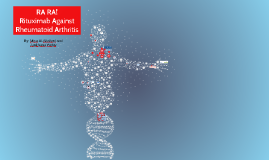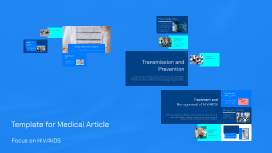Template for Medical Article
Transcript: Preventive Measures Preventive measures include consistent condom use, regular HIV testing, and pre-exposure prophylaxis (PrEP). Needle exchange programs and education about safe practices significantly reduce transmission risks. Global Prevalence As of 2021, approximately 38 million people worldwide are living with HIV. Sub-Saharan Africa remains the most affected region, accounting for nearly two-thirds of the total global population living with HIV. Importance of Education What is AIDS? Education regarding HIV transmission and prevention empowers individuals to make informed choices. Community awareness programs can reduce stigma and encourage testing, leading to early diagnosis and treatment. Introduction to HIV/AIDS AIDS is the final stage of HIV infection, characterized by a severely weakened immune system. This leads to opportunistic infections and infections that can be fatal without treatment. HIV (Human Immunodeficiency Virus) and AIDS (Acquired Immunodeficiency Syndrome) have significant global health implications. Understanding these terms is crucial for awareness, prevention, and treatment. Overview of HIV How HIV is Transmitted HIV is a virus that attacks the body's immune system. Particularly, it targets CD4 cells, which help the immune system fight infections. If untreated, HIV can lead to AIDS. HIV is primarily transmitted through unprotected sexual contact, sharing needles, and from mother to child during childbirth or breastfeeding. Additionally, contact with infected blood can lead to transmission, emphasizing the need for precautions in healthcare settings. Transmission and Prevention Understanding the methods of HIV transmission and effective preventive measures is crucial for controlling the spread of this virus. Education plays a vital role in promoting awareness about HIV and safeguarding communities. Antiretroviral Therapy (ART) Antiretroviral therapy (ART) is crucial for managing HIV infection, suppressing the viral load, and improving patient health. ART reduces the risk of transmission and allows individuals to lead healthier lives with prolonged life expectancy. Treatment and Management of HIV/AIDS Managing Comorbidities Effective management of HIV/AIDS involves a comprehensive approach, including antiretroviral therapy (ART), addressing coexisting health conditions, and providing psychological support. Healthcare providers play a crucial role in ensuring optimal patient care and adherence to treatment regimens. Patients with HIV often face comorbidities such as tuberculosis, hepatitis, and mental health disorders. Effective management of these conditions is essential to enhance the overall health and well-being of individuals living with HIV. Template for Medical Article Role of Healthcare Providers Psychological Support Healthcare providers are vital in the continuum of care for HIV patients. They facilitate regular monitoring, guide treatment choices, and ensure adherence to ART, all while building a trusting relationship with the patient. Psychological support is essential for individuals living with HIV, as mental health impacts treatment adherence. Access to counseling and support groups can significantly enhance emotional well-being and improve health outcomes. Focus on HIV/AIDS

















